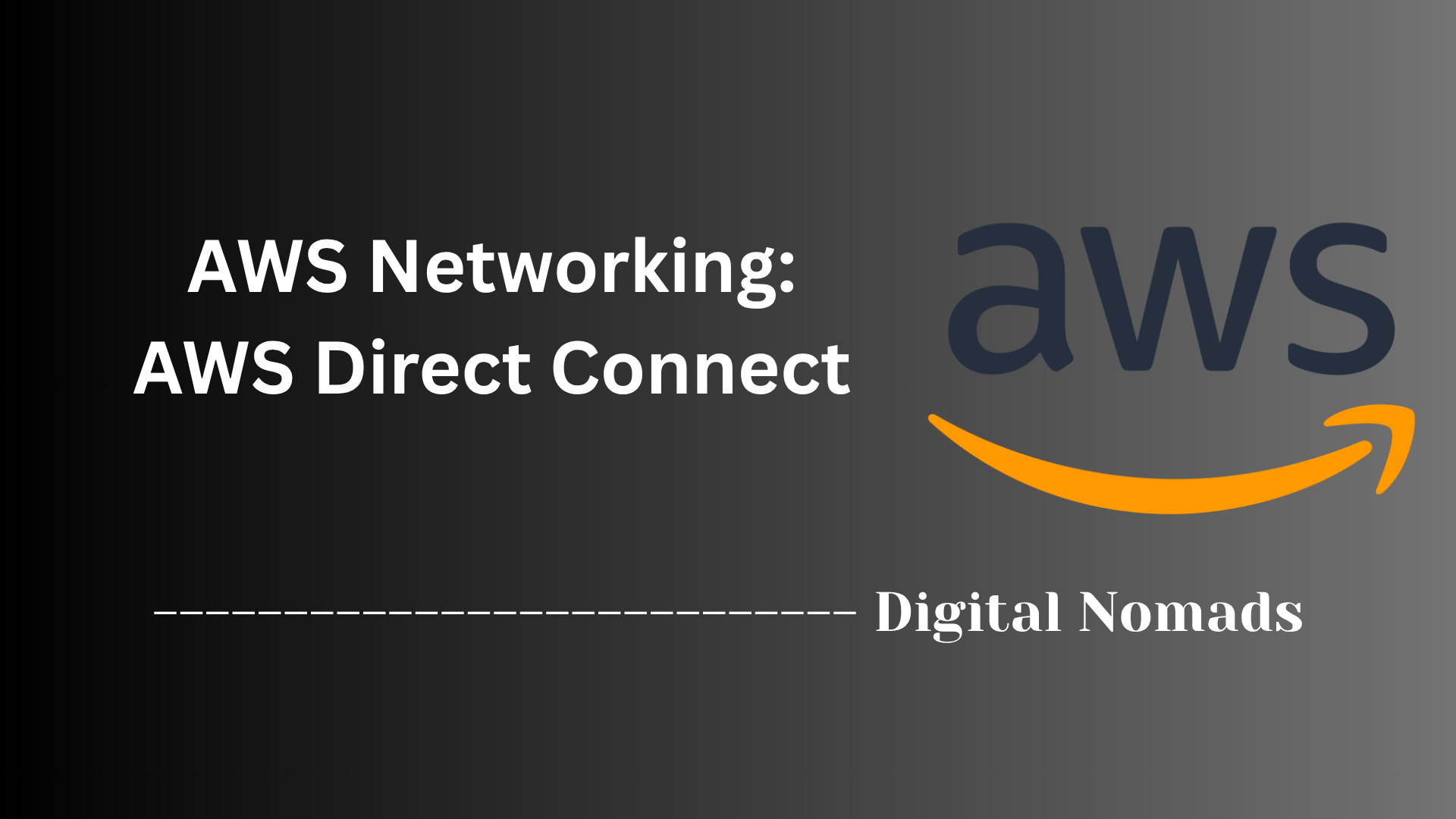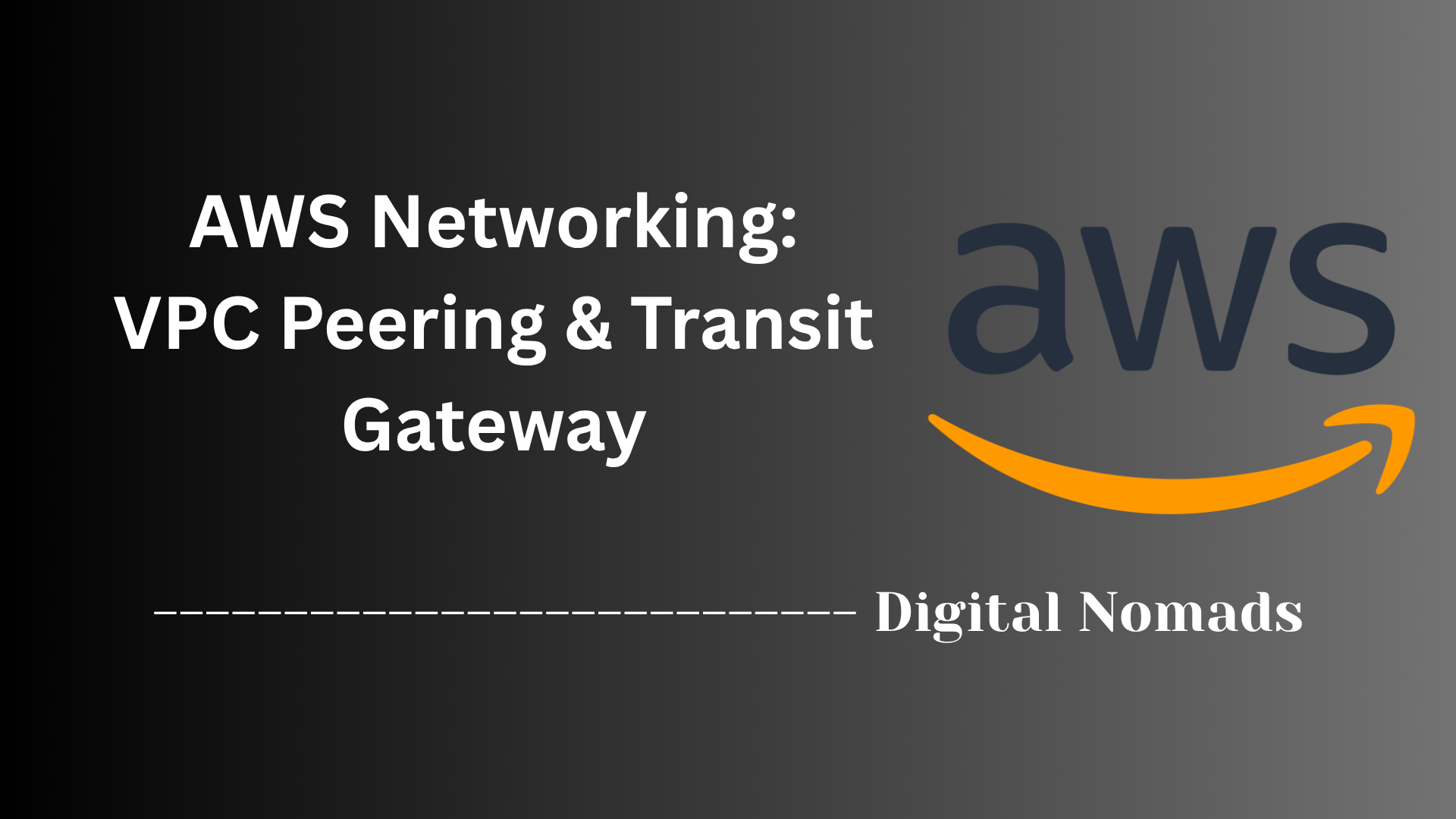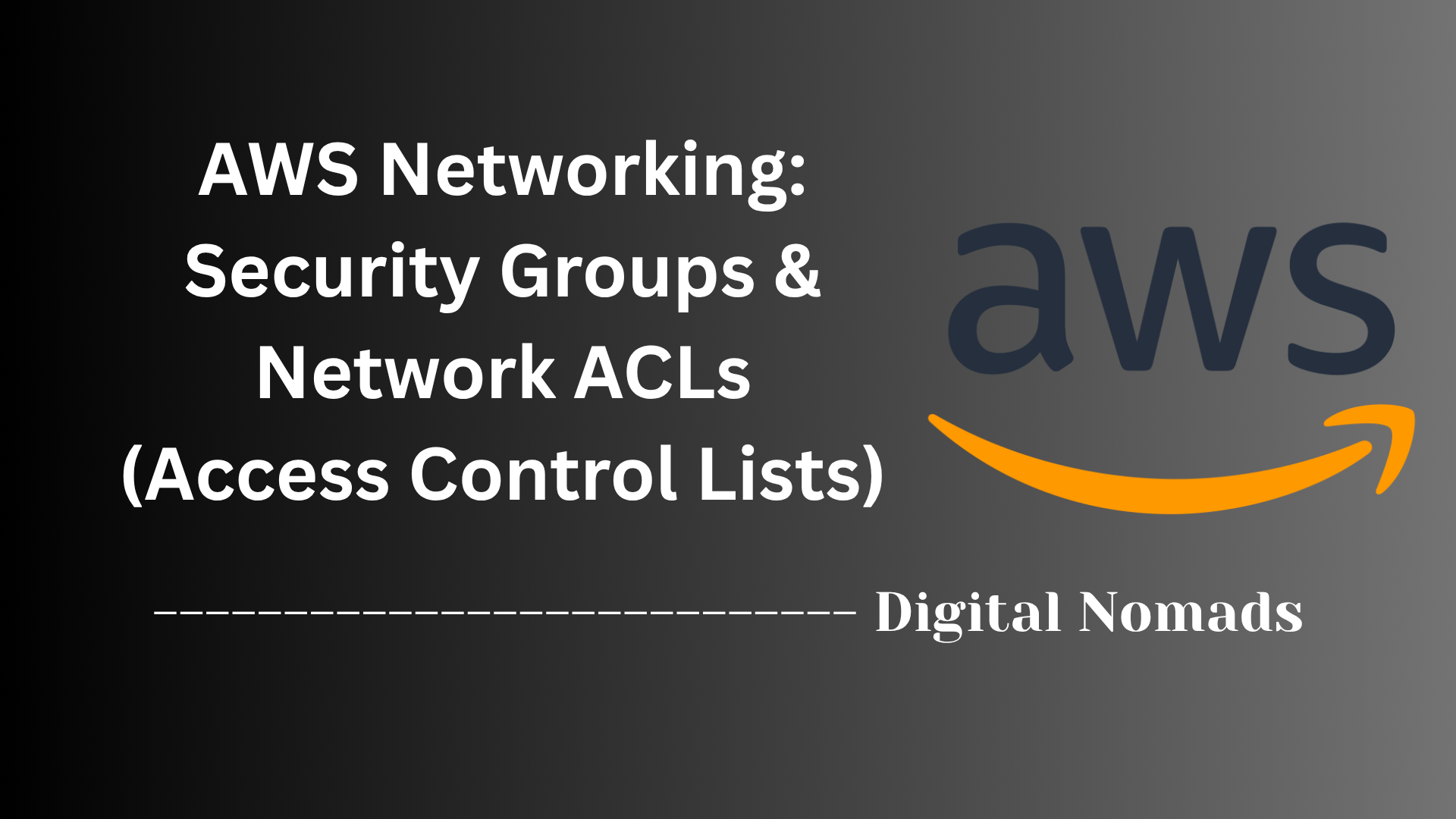Table of Contents
- Overview
- Core Components
- Types of NAT Gateways
- How NAT Gateway Works
- Performance and Capacity
- Pricing
- Limitations and Considerations
- Best Practices
- Conclusion
AWS Networking: NAT Gateway – Overview
What is an AWS NAT Gateway?
An AWS NAT Gateway (Network Address Translation Gateway) is a fully managed networking service that allows instances within private subnets of your Virtual Private Cloud (VPC) to initiate outbound connections to the internet or other AWS services securely, without allowing unsolicited inbound connections. It acts as an intermediary that translates private, non-routable IP addresses from your internal resources into a public IP for outbound requests, masking internal details from the outside world.
Why Do You Need to Know About AWS NAT Gateway?
- Enable Secure Outbound Internet Access: Many applications and workloads need to download updates, access APIs, or sync data to external sources. NAT Gateway lets your private instances reach the internet safely, without being directly accessible from it.
- Boost Security: By keeping your instances in a private subnet (with no direct inbound access), you greatly reduce the attack surface. All inbound traffic is blocked unless it is a response to a request initiated by your private resource.
- Compliance and Best Practice: Organizations aiming for a defensible, security-first architecture—especially those bound by regulatory requirements—rely on NAT Gateway to enforce separation between internet-facing and internal resources.
- Simplify Management: NAT Gateway is fully managed by AWS. There’s no need to patch, monitor, or manually scale a NAT appliance—you get seamless scaling, automatic high availability within an AZ, and built-in monitoring via CloudWatch.
How Does AWS NAT Gateway Work?
- Private Initiation: Resources (like EC2 instances) in private subnets that need to reach the internet are configured to route their outbound traffic to a NAT Gateway.
- Address Translation: The NAT Gateway receives outbound requests from these resources and translates their private IP addresses to its own public IP address (for public gateways), facilitating secure outbound connectivity.
- Forwarding and Response: The translated requests are sent to their external destination (internet or other AWS resources). Responses return to the NAT Gateway, which then translates them back and forwards traffic to the original resource. Unsolicited inbound traffic is dropped.
- Scalability and Availability: NAT Gateways automatically scale to meet bandwidth requirements (up to 100 Gbps) and are deployed per Availability Zone for high resilience.
- Seamless Integration: You control which subnets route traffic through the NAT Gateway by configuring your route tables. Security and performance can be further managed using AWS tools and best practices.
In summary:
AWS NAT Gateway is essential for enabling secure, scalable outbound internet access from your private subnets, without exposing your internal resources to direct threat vectors. It’s a foundational tool for cloud architects, security engineers, and DevOps professionals aiming to build robust, compliant, and resilient AWS environments.
Core Components
These are the essential building blocks that make AWS NAT Gateway function for secure and scalable outbound connectivity from private subnets:
- Elastic Network Interface (ENI): The network interface attached to the NAT Gateway, which routes outbound traffic from private subnets through the gateway. Each NAT Gateway is associated with a specific subnet in one Availability Zone.
- Elastic IP Address (EIP): A static public IPv4 address assigned to a public NAT Gateway, used for translating and routing outbound traffic to the internet. It masks the private IPs of internal resources.
- Subnet Association: The subnet in which the NAT Gateway is created determines its AZ and redundancy. Proper associations are critical for resilience and efficient routing.
- Route Tables: Direct traffic from private subnets to the NAT Gateway. Route table entries ensure outbound connections use the NAT Gateway, while inbound connections remain blocked.
- Security Groups and Network ACLs (NACLs): While you can't attach security groups directly to the NAT Gateway, NACLs regulate the traffic flow for the subnet in which the NAT Gateway resides and outgoing resources.
Types of NAT Gateways
AWS offers two main types of NAT Gateways, each designed for specific networking needs within your VPC:
-
Public NAT Gateway:
- Deployed in a public subnet with an associated Elastic IP address.
- Allows instances in private subnets to initiate outbound connections to the internet.
- Prevents unsolicited inbound connections from the internet, securing your private resources.
- Internet-bound traffic from private subnets is routed through the public NAT Gateway, which performs IP translation using its Elastic IP.
- Commonly used for service updates, software downloads, or accessing external APIs from private resources.
-
Private NAT Gateway:
- Deployed in a private subnet without an Elastic IP address.
- Facilitates outbound connections from private subnets to other VPCs or on-premises networks via AWS PrivateLink, Transit Gateway, or VPN, but not the internet.
- Enhances security and isolation for private-to-private resource communication without exposing traffic to the public internet.
- Response traffic from these destinations is properly routed back to the originating private instances.
- Useful for regulated environments or inter-VPC workloads where internet access is prohibited.
| Feature | Public NAT Gateway | Private NAT Gateway |
|---|---|---|
| Outbound Destination | Internet, other VPCs, on-premises | Other VPCs, on-premises (not internet) |
| Elastic IP | Required | Not Used |
| Subnet Placement | Public subnet | Private subnet |
| Main Use Case | Internet-bound traffic from private subnets | Private network connectivity without internet exposure |
Tip: Choose the NAT Gateway type that fits your data security, compliance, and connectivity requirements. For high availability and scalability, deploy NAT Gateways in each required Availability Zone.
How NAT Gateway Works
Understanding how an AWS NAT Gateway operates can help you design resilient, secure, and scalable cloud networking. Here’s a step-by-step overview of the process:
-
Private Instance Initiates Connection:
An instance within a private subnet (no direct internet access) attempts to reach an external service, such as downloading software updates from the internet. -
Traffic Routed to NAT Gateway:
The route table for the private subnet contains a rule that sends all outbound traffic (e.g.,0.0.0.0/0for IPv4) to the NAT Gateway located typically in a public subnet[1][2]. -
NAT Gateway Performs Address Translation:
The NAT Gateway receives the outbound traffic and translates the source private IP address of the instance to its own public IP address (if public NAT Gateway) or retains its private IP for internal routing (if private NAT Gateway)[1][5]. -
Traffic Sent to Destination:
The translated packet is then forwarded by the NAT Gateway to its destination—such as the internet, another VPC, or on-premises network, depending on the gateway type[1][5]. -
Return Traffic Translated Back:
When the external resource responds, the NAT Gateway receives the inbound packets, translates the destination address back to the original private IP of the requesting instance, and forwards the response back to the instance in the private subnet[2][5]. -
Unsolicited Inbound Traffic Blocked:
NAT Gateway only allows responses to connections initiated by the private subnet; it drops any unsolicited inbound traffic, ensuring security for internal resources[1][7].
Key Points:
- Route Table Configuration is essential—private subnets must have a route directing outbound traffic to the NAT Gateway.
- NAT Gateway supports protocols like TCP, UDP, and ICMP for outbound connectivity[1][8].
- For high availability, deploy a NAT Gateway in each Availability Zone with private subnets that need outbound access[1].
- NAT Gateway automatically scales up to handle increased bandwidth demands (up to 100 Gbps per gateway)[8].
Tip: Instances in private subnets never receive direct inbound connections from outside; only responses to their outbound requests are permitted.
Performance and Capacity
AWS NAT Gateway is designed to deliver scalable, resilient, and high-throughput outbound connectivity for private subnets. Here’s how its core performance and capacity features work:
-
Automatic Scaling:
NAT Gateway automatically adjusts to high network traffic—there’s no manual intervention needed. It can support both small and very large workloads, making it ideal for environments with fluctuating demands[3][10]. -
Bandwidth:
Each NAT Gateway starts with 5 Gbps of bandwidth and will automatically scale up to 100 Gbps as needed. This ensures robust throughput for large-scale deployments and heavy data transfers[4][10][12]. -
Packet Processing Rate:
Can handle up to 1 million packets per second and will scale up to 10 million packets per second. If you require even more, consider deploying additional NAT Gateways[12]. -
Concurrent Connections:
Each NAT Gateway supports up to 55,000 simultaneous connections per unique destination (IP/port/protocol). By associating up to eight IP addresses, you can achieve up to 440,000 concurrent connections to a single destination[2][6][9][12]. -
High Availability:
Built to be highly available within an Availability Zone. For even greater resilience, deploy one NAT Gateway per Availability Zone to avoid disruption in case of a zonal failure[4][12]. -
Monitoring & Metrics:
AWS provides CloudWatch metrics for bandwidth, packet rates, connection counts, and errors. Use these stats to monitor health, optimize performance, and predict scaling needs[5][11].
| Metric | Value | Details |
|---|---|---|
| Bandwidth | 5 to 100 Gbps | Automatically scales; start at 5 Gbps, peak at 100 Gbps per gateway[4][10][12] |
| Packet Rate | 1M to 10M pps | 1 million packets/sec, scales up to 10 million/sec[12] |
| Concurrent Connections | Up to 440,000 | 55,000 per IP, up to 8 IPs per gateway[2][9][12] |
| Availability | Within 1 AZ | For multi-AZ resilience, deploy multiple NAT Gateways[12] |
Tip: To prevent congestion or dropped packets, monitor your NAT Gateway’s CloudWatch metrics, and deploy additional gateways if your traffic regularly approaches the upper thresholds.
Pricing
AWS NAT Gateway pricing is usage-based and consists of two core components. You are charged for how long the NAT Gateway is provisioned and the volume of data it processes. Understanding the pricing model is essential for estimating costs and optimizing your architecture.
1. Pricing Components
-
Hourly Charge:
You are billed for each NAT Gateway per hour that it is running, regardless of whether traffic flows through it or not.
Typical rate (US East/West):$0.045 per hour. -
Data Processing Charge:
You are billed for the amount of data processed by the NAT Gateway, calculated in GB.
Typical rate:$0.045 per GBprocessed. -
Additional Data Transfer Costs:
Standard AWS data transfer charges apply when data is sent between Availability Zones, VPCs, or across the internet. This is in addition to NAT Gateway charges.
2. Example Cost Calculation
Let’s say you run a single NAT Gateway in your VPC for 30 days (720 hours), and it processes 100 GB of outbound traffic:
- Hourly charge: 720 hours × $0.045 = $32.40
- Data processing charge: 100 GB × $0.045 = $4.50
- Total estimated monthly cost: $36.90 (excluding additional transfer costs)
Region-Based Variation
Pricing may vary depending on the AWS region. For example, NAT Gateway rates might differ between:
- US East (N. Virginia)
- US West (Oregon)
- EU (Frankfurt)
- Asia Pacific (Sydney)
3. Cost Optimization Tips
- Use VPC Endpoints: Instead of routing traffic to services like S3 or DynamoDB through NAT Gateway (which incurs data charges), create interface or Gateway VPC endpoints, which are free or lower-cost.
- Right-size Deployment: Only provision NAT Gateways in the AZs where needed. Don’t over-provision gateways and avoid leaving unused ones running.
- Monitor Usage: Enable Amazon CloudWatch and VPC Flow Logs to audit traffic and optimize data usage.
Note: AWS does not currently include NAT Gateway usage in the Free Tier. All usage is billable from the first hour onward.
Limitations and Considerations
While AWS NAT Gateway is an essential component for private subnet connectivity, there are several important limitations and architectural considerations to be aware of:
-
Outbound Only, No Inbound NAT:
NAT Gateway only supports outbound connections for private subnets. It does not allow unsolicited inbound connections from the internet or external networks, which keeps your private resources protected but limits exposure to only initiated requests[2][3]. -
No Fine-Grained Security Controls:
Security groups cannot be directly associated with a NAT Gateway. Access control relies on network ACLs for the subnet. No intrusion detection, proxying, or deep traffic inspection is available compared to custom (self-managed) NAT solutions[3]. -
No Raw Traffic Logs:
NAT Gateways do not provide detailed raw connection or traffic logs—only CloudWatch metric data and VPC Flow Logs for the associated ENI, which may limit your ability to audit or troubleshoot specific flows[3][4]. -
Cost Considerations:
Both hourly rates and data processing charges apply. Costs accrue even when the gateway is idle. High data volumes, cross-AZ traffic, or misconfigured route tables can lead to unexpectedly high bills. Using VPC endpoints for AWS services like S3 can be more cost-effective[5][9]. -
Single AZ Resiliency:
Each NAT Gateway is deployed in a single Availability Zone (AZ). If the AZ fails, resources in other zones using that NAT Gateway lose outbound connectivity. For high availability, deploy a gateway per AZ and update route tables accordingly[5]. -
Performance Limits:
Each NAT Gateway supports up to 100 Gbps throughput and up to 440,000 concurrent connections to a unique destination (with up to 8 IPs associated). High connection loads or bandwidth demand may require multiple gateways to avoid bottlenecks or packet loss[4][6][7]. -
No Customization or Routing Manipulation:
AWS managed NAT Gateways can’t be customized for advanced routing, traffic manipulation, or enhanced packet handling. If you need detailed control (such as running proxies, malware scanning, or custom failovers), a self-managed NAT instance might be more suitable[3]. -
Cross-AZ Data Charges and Latency:
If network traffic crosses Availability Zones (for example, when resources in different AZs share a NAT Gateway), additional AWS data transfer charges may apply and latency can increase. Deploy each gateway in the same AZ as your resources when possible[5]. -
Route Table Configuration:
A misconfigured route table (missing or incorrect NAT Gateway routes) can result in no internet access for private subnets. Always verify your VPC routing setup to ensure reliable connectivity[5].
Tip: Regularly monitor your network design, route tables, and NAT Gateway metrics to avoid unexpected performance or cost issues. Consider alternatives like VPC endpoints for workloads that only need AWS service access.
Best Practices
Adhering to AWS NAT Gateway best practices helps ensure secure, cost-efficient, and highly available networking for your cloud resources.
-
Deploy for High Availability:
Place a NAT Gateway in each Availability Zone (AZ) where private subnets require outbound connectivity. This avoids single points of failure and ensures resources retain internet access even if one AZ is disrupted. -
Optimize Costs:
Use VPC Endpoints for AWS services like S3 and DynamoDB wherever possible, instead of routing service traffic through the NAT Gateway, to avoid unnecessary data processing fees. Remove idle gateways to cut unnecessary costs. -
Right-Size Your Deployment:
Only deploy NAT Gateways in AZs with private subnets that truly need outbound internet or cross-VPC connectivity. Avoid centralized gateways spanning multiple AZs to reduce cross-AZ traffic charges. -
Correct Route Table Configuration:
Double-check all private subnet route tables to ensure outbound (default) traffic is routed to the correct NAT Gateway in the same AZ. Improper routing can lead to connectivity or cost issues. -
Monitor & Alert:
Track NAT Gateway usage with CloudWatch metrics and VPC Flow Logs. Set up alarms for spikes in data, connection failures, or near-capacity usage to prevent bottlenecks or excessive costs. -
Enforce Network Security:
Implement Network ACLs on subnets to limit unnecessary outbound access and block undesired traffic. Regularly audit rules to ensure compliance and reduce attack surface. -
Document & Review Architecture:
Maintain up-to-date documentation of your NAT Gateway VPC topology, route tables, and failover processes. Periodically review network design as AWS introduces new networking features and cost models. -
Plan for Scaling:
Regularly monitor metrics related to bandwidth and connections. Deploy additional gateways if your workloads frequently approach throughput or connection limits.
Tip: Using automation tools such as AWS CloudFormation or Terraform can help standardize NAT Gateway deployments and enforce architectural best practices across environments.
Conclusion
Throughout this blog post, we’ve taken a deep dive into the AWS NAT Gateway, one of the key building blocks for secure, scalable, and cost-effective outbound internet connectivity in your VPC.
🔑 Key Takeaways:
- What it is: AWS NAT Gateway allows instances in private subnets to securely communicate with the internet or other external services, while preventing unsolicited inbound access.
- Core Components: Includes Elastic IPs, route tables, and ENIs—all designed to work together to enable seamless and secure traffic routing.
- Types of NAT Gateways: Choose between Public and Private NAT Gateways depending on whether your resources need internet access or private network routing only.
- How It Works: Traffic is routed from private subnets through the NAT Gateway, where it's translated and securely sent to external destinations.
- Performance & Capacity: Supports massive scalability—up to 100 Gbps bandwidth and 440,000 concurrent connections.
- Pricing: Charges apply per hour and per GB of data processed. Costs can add up quickly, so monitoring and optimization are essential.
- Limitations & Considerations: Not suitable for inbound traffic, lacks direct security group control, and can generate significant costs if misconfigured.
- Best Practices: Always deploy in multiple Availability Zones, monitor metrics, use VPC endpoints when possible, and configure route tables correctly.
👋 Final Thoughts
Whether you're building microservices in a private subnet, managing hybrid networks, or designing a secure architecture, AWS NAT Gateway plays a critical role in your VPC setup. By understanding how it works and following the best practices we've covered, you're well-equipped to design more efficient, secure, and cost-aware cloud environments.
Thanks for reading! 🙌
If you found this guide helpful, feel free to share it with your team or community. Got questions or want to dive deeper into another networking service? Let us know—we’d love to hear from you!
Happy networking! 🌐💻




